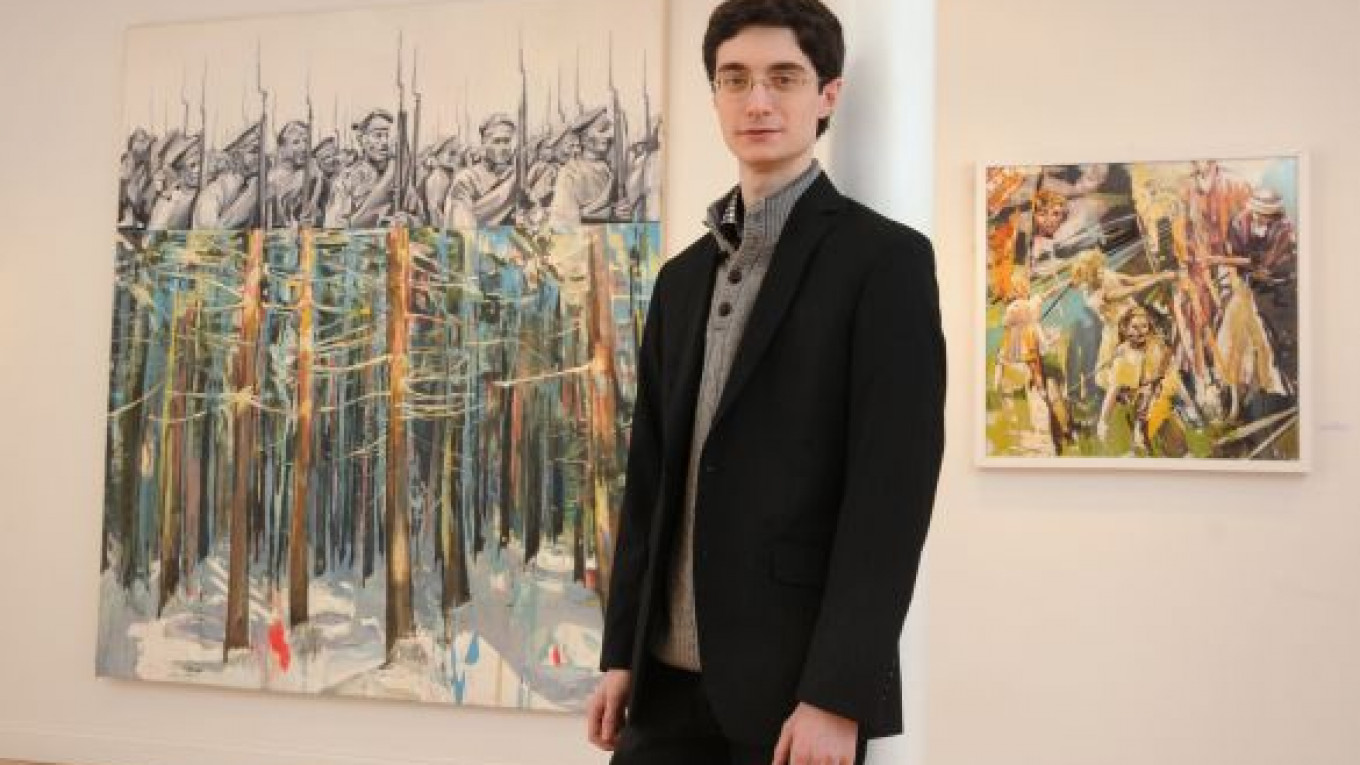Stass Shpanin’s paintings can be found in the private collections of major world leaders, including the President of Azerbaijan and former U.S. President George W. Bush.
This Thursday, he will give a talk in honor of the 400th anniversary of the Romanov dynasty as part of the Moscow International Festival of Art, at which he will present “The Royal Family Through the Eyes of an American Artist.”
More than 300 artists from over 20 countries, including the former Soviet Union, Europe, India, China and North America, will participate.
Shpanin will be discussing the paradoxes of pre-revolutionary Russia at the end of the Romanovs’ reign and presenting a painting based on their final days.
The Romanov jewels helped to formally identify the last ruling family of the dynasty after their murder in Yekaterinburg in 1918. Their pivotal role inspired Shpanin to produce a new painting entitled “Diamond.”
“Looking at the history of the 19th and 20th centuries is particularly interesting now. Only 20 years ago, it was kept under lock and key,” he stated, acknowledging the severity with which Imperial Russia was treated under Soviet rule.
The notoriety of his recent works and passage of his early artistic development is all quite striking when you realize that Stass Shpanin is only 23 years old.
Born in Baku to a family of Russian and Azerbaijani descent, Shpanin began training as an artist at the tender age of four. At seven he had his first solo show, and at 12, the Guinness Book of World Records named him the Youngest Professional Artist in the World.
The following year his family moved to the United States, where Shpanin continued to paint and exhibit widely.
The intensity of attention he garnered at such a young age could have been a recipe for hubris, but the unassuming young artist seems in no danger of resting on his childhood laurels. “It’s history,” he said. “It’s in the past. You have to do something in the present.”
While not belabored by his own personal history, Shpanin remains deeply preoccupied with the nature of historical memory, which will receive a strong focus in his presentation.
History as experienced in Shpanin’s works is a delicate process. “I believe that history is being written right now by people living today, even the history of the past,” he said.
In an earlier series, he depicted historic scenes as layers of apparently unrelated images united solely by geometric elements in the composition. “We want to see history as one image, and I’m showing that it’s not. This is the battle, that happens on canvas,” Shpanin said.
As a student at Hartford Art School he began mining the rich visuals of 19th- and early 20th-century Russian history for his work. Last year, he was awarded a Fulbright grant, bringing him to Moscow.
While they are meant to provoke and intrigue, Shpanin insists that his paintings are not intended to be beautiful. “Painting ideas and images that might be uncomfortable for a viewer is more important than pleasing the audience,” he said.
Although the rise of conceptual art has left many traditional painters dissatisfied with the modern art world, Shpanin is happy to embrace it.
“I believe in conceptual art and in postmodernism,” he said, describing upcoming plans for forays into video and installation work.
These typically American attitudes contrast the approach Shpanin has witnessed in Russian arts education.
“[In Russia], art is about process, art is about painting nice images,” he said. A disconnection between Russia and the international art scene can occasionally prevent Russian artists from attaining a major international presence.
According to Shpanin there are only “a small percentage, of artists who are very knowledgeable of what’s going on in the art world outside of Russia.”
Working to bridge the gap is the aforementioned festival hosting Shpanin’s presentation: the colossal Moscow International Festival of Art, which runs from Wednesday to Sunday.
The show involves competitions spanning eight different media formats and aspires to encourage “the development of cultural dialogue between countries and the strengthening of friendship between nations,” according to Vera Kiseleva, president of the Moscow Public Fund for Support and Development of Culture of Modern Art, the project’s organizer.
Relationships formed during the festival can give rise to further collaborations, strengthening cross-cultural dialogue and the presence of Russian artists abroad.
“Russian art is presented in great quantities in other countries just after this type of festival, because new cultural relationships are established, and new projects are planned,” Kiseleva said.
“The 400-Year Anniversary of the House of the Romanovs: Imperial Russia Through the Eyes of an American Artist,” (Russian with simultaneous translation) will take place on June 27 at 6 p.m. at the Central House of Artists, 10 Krymsky Val. Metro Oktyabrskaya.
Contact the author at artsreporter@imedia.ru
Related articles:
A Message from The Moscow Times:
Dear readers,
We are facing unprecedented challenges. Russia's Prosecutor General's Office has designated The Moscow Times as an "undesirable" organization, criminalizing our work and putting our staff at risk of prosecution. This follows our earlier unjust labeling as a "foreign agent."
These actions are direct attempts to silence independent journalism in Russia. The authorities claim our work "discredits the decisions of the Russian leadership." We see things differently: we strive to provide accurate, unbiased reporting on Russia.
We, the journalists of The Moscow Times, refuse to be silenced. But to continue our work, we need your help.
Your support, no matter how small, makes a world of difference. If you can, please support us monthly starting from just $2. It's quick to set up, and every contribution makes a significant impact.
By supporting The Moscow Times, you're defending open, independent journalism in the face of repression. Thank you for standing with us.
Remind me later.


